You Can Go Back
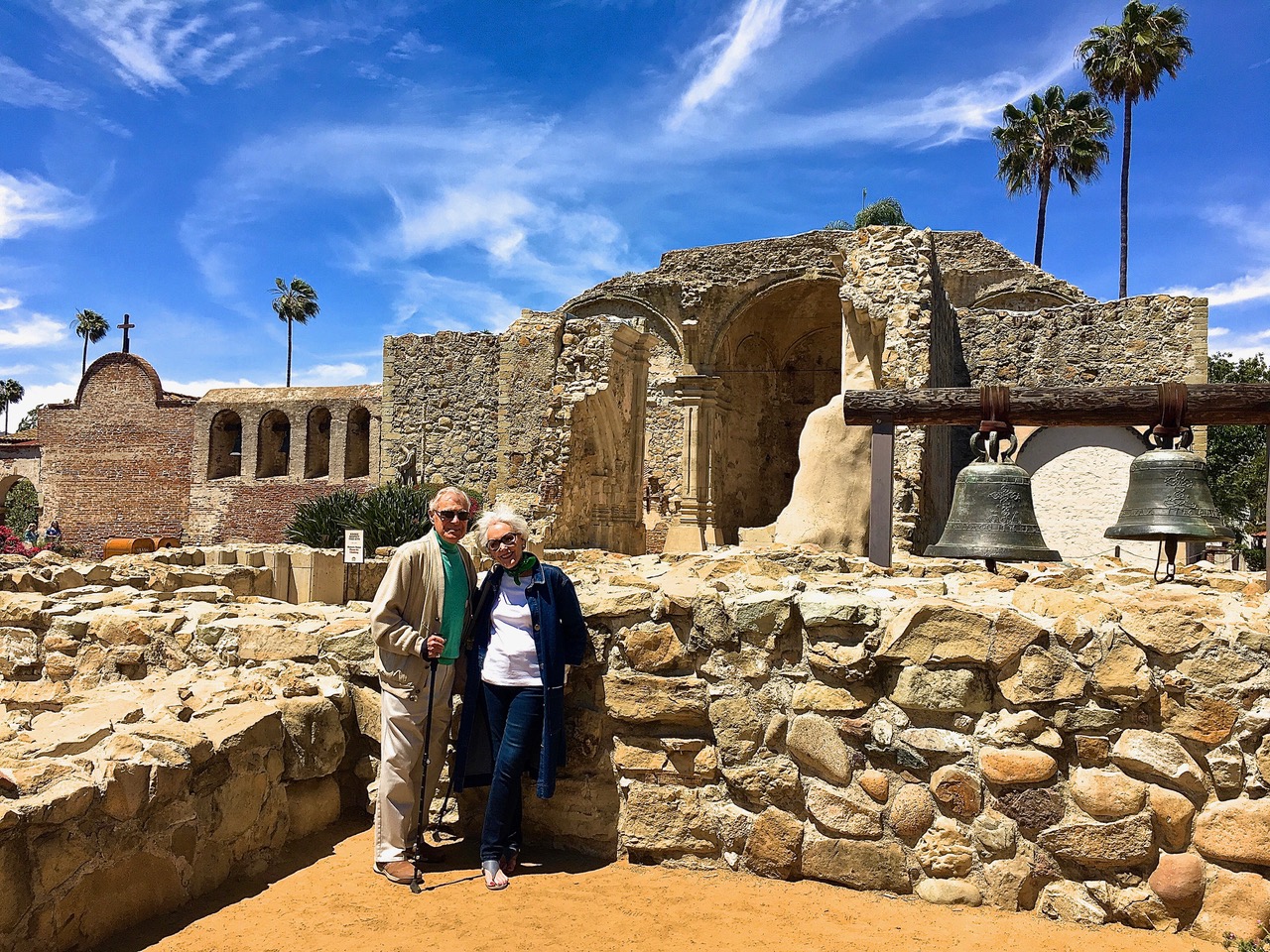
Who says you can’t go back? I did and had a fabulous time reminiscing the old and enjoying the new with my husband, Don. That was in Coronado, California, where I was a new bride “a thousand years ago.”
My then-husband Cork was a Navy carrier pilot who was stationed at North Island in Coronado. What a paradise. We needed a furnished place, but they were all so dumpy until we found an apartment at 1111 Adella, just across the street from the Del Coronado Hotel and backing up to the Spreckels Mansion. The mansion was in my backyard or I was in theirs. We couldn’t afford the place, but it was brand-new, not to mention location, location, location. I loved driving along the ocean with the top down on my 1956 MG to my job at North Island. We had a ski boat and would often water ski in San Diego bay. It was a sweet time.
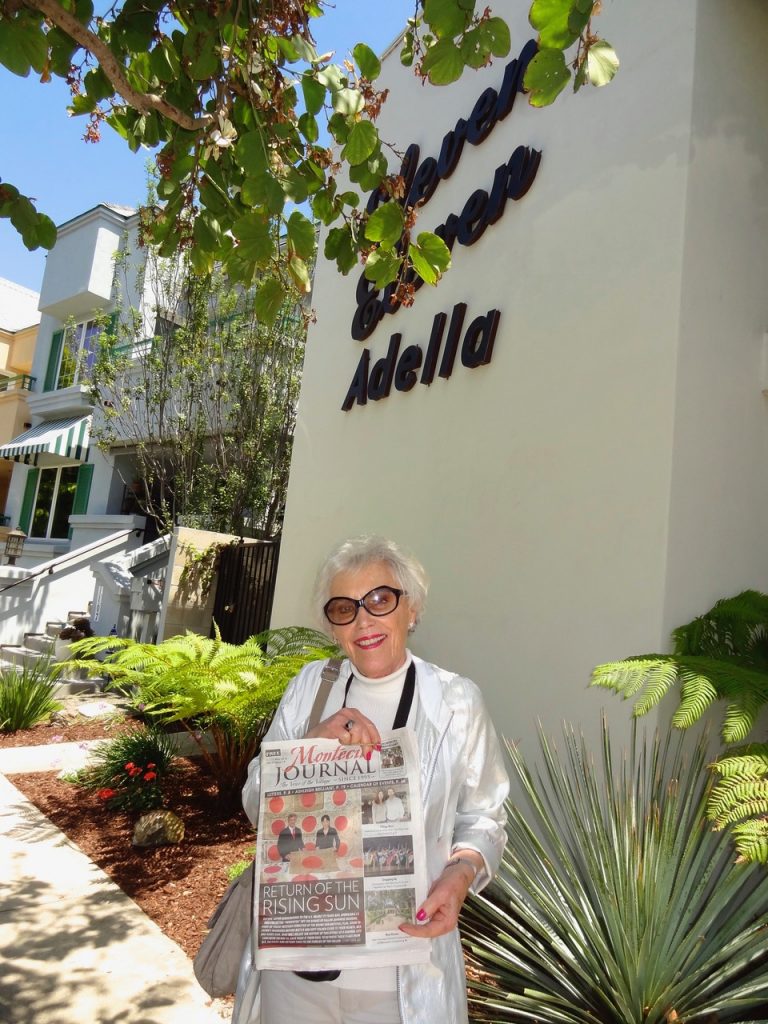
All these many years later, I’m living in Montecito when I learned of a trip to Coronado with the MClub led by Maria McCall and sponsored by the Montecito Bank and Trust. I signed us up right away. We were to meet at the train station at 9 am for our trip to San Diego, but there was a slight glitch. When Maria went to pick up the tickets, they said the train departed at 6 am and there was no room on the 9 o’clock train.
Ever resourceful Maria chartered a bus and away we went with a stop at San Juan Capistrano. I hadn’t been there since I was 12, so it was a real treat to browse through the Mission where all the birds still return on March 19, St. Joseph’s Day.
Here is the legend of the cliff swallows as chronicled in Father John O’Sullivan’s book, Capistrano Nights. He was the pastor from 1910 to 1933. One day, while walking through town, Father saw a shopkeeper, broomstick in hand, knocking down the conically shaped mud swallow nests located under the eves of his shop. The birds were darting back and forth through the air squealing over the destruction of their home.
“What in the world are you doing?” Father asked. “Why, these dirty birds are a nuisance and I am getting rid of them!” “But where can they go?” “I don’t know and I don’t care,” he replied, slashing away with his pole. “But they’ve no business destroying my property.” Father then said, “Come on swallows, I’ll give you shelter. Come to the Mission. There’s room enough there for all.” The very next morning, Father O’Sullivan discovered the swallows busy building their nests outside of the Church. You can still come and see.
We arrived in Coronado and checked into the Glorietta Bay Inn, which was sugar magnate John Spreckels’s 1908 mansion, and my view from my kitchen window those many years later. We walked to the boathouse that was built in 1887 and was once a part of the Del Coronado. It is now a Bluewater Grill. We have one here near the pier in Santa Barbara. Theirs has been named number 1 seafood restaurant on the island.
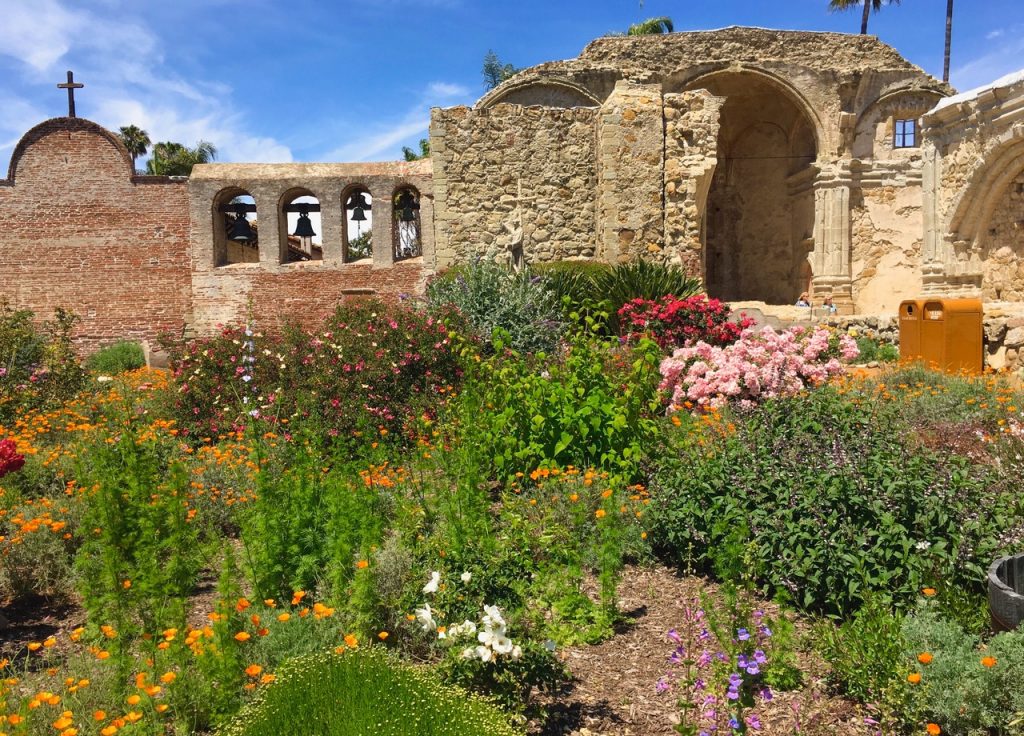
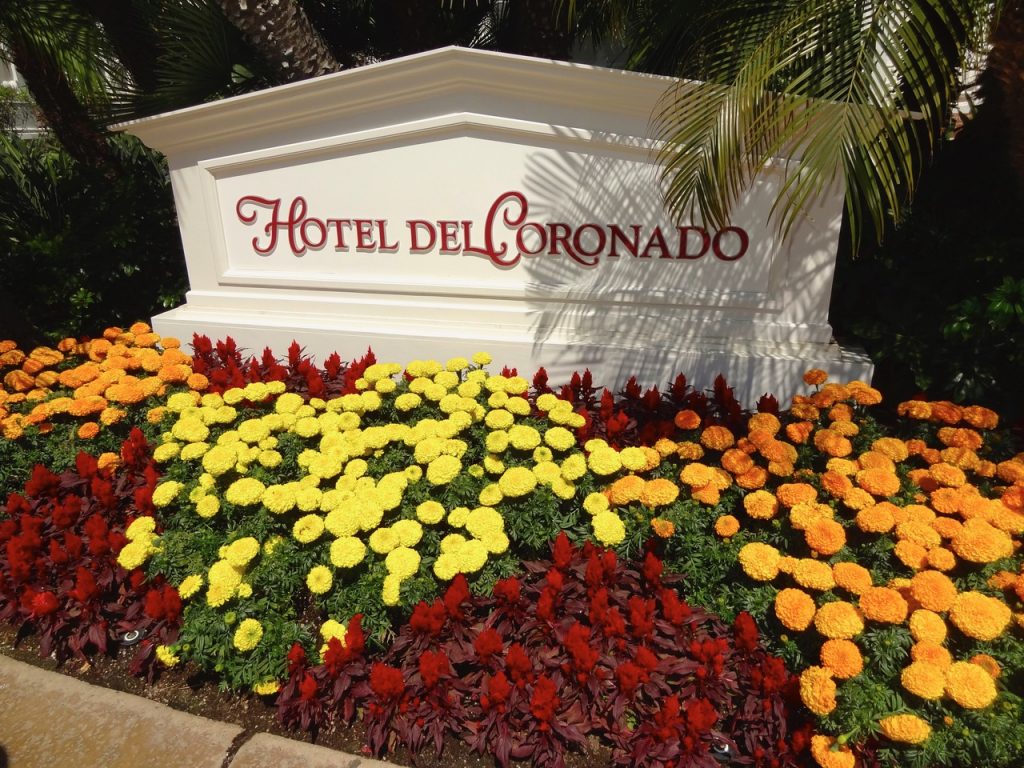
The next day, we had an incredible guided tour of the surrounding eight blocks of Coronado Island strolling through this famous playground of presidents and princes. We saw the site of the old tent city on the beach near the hotel where thousands enjoyed the surf and sand from 1900 to 1938 at a far cheaper rate than the Del. The smallest unfurnished tent was 8 by 10 feet and started at $1.50 per week without a floor and $2.50 with a floor. The hotel had been built in 1888. Their rooms started at $3 per day – a definite class distinction. Sometimes they mingled with hotel guests attending a tent city concert or the tent people having breakfast or lunch for 50 cents at the hotel.
When the Del was built, it was thought to be one of the largest buildings in the U.S. to electrify. In 1885 two businessmen, Babcock and Story purchased the entire “Island” of Coronado for $110,000, forming the Coronado Beach Company. It is technically a peninsula connected by a thin spit of land called the Silver Strand. By 1886, the establishment of Coronado was well underway and a land auction was held. Six thousand folks came, and after one day they’d sold $1 million in lots. Babcock and Story could begin their hotel.
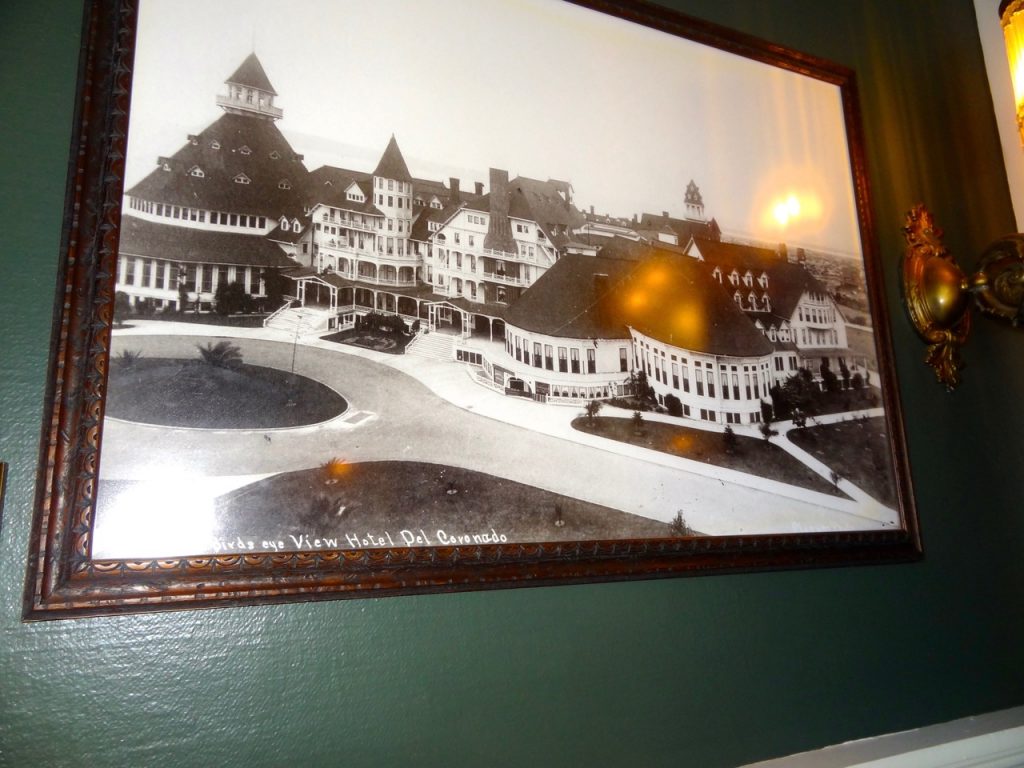
We heard stories of moguls and movie stars, Navy pilots, and SEALS. In my day, the Mexican Village restaurant was famous as a hangout for the bachelor pilots and its salad dressing was known throughout the island. On our walking tour, we had plenty of time to look in all the nooks and crannies of the Hotel del Coronado. You may remember the movie Some Like It Hot with Tony Curtis, Jack Lemmon, and Marilyn Monroe was shot there.
On April 7, 1920 Edward, Prince of Wales was feted at the Del. Oddly, his future wife, Wallis Warfield Spencer Simpson, a Coronado socialite, was living there at the time. She was married to her first husband, lieutenant commander Earl Winfield Spencer, Jr. She eventually divorced Spencer to marry her second husband, Ernest Simpson. She then moved to England and befriended Prince Edward, who had to abdicate as king in order to marry the twice-divorced Wallis.
Ronald Reagan is said to have made the decision to marry Nancy during a visit to the Del, where she was on hand to hear him speak at a Junior League convention. Another interesting person on the guest list was San Diegan Theodor Geisel, America’s Dr. Seuss. He was a fan of the hotel and attended their 100th birthday party. On our tour, there was also time to sit on the veranda overlooking the grand beach filled with tourists.
Spreckels’ Island
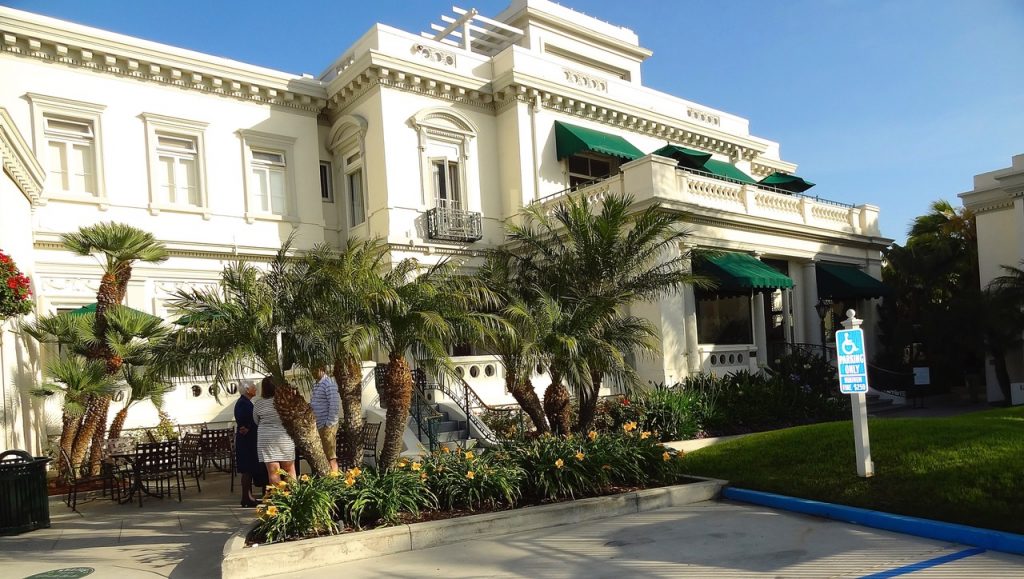
A few centuries ago, Cabrillo claimed the area for Spain. He then broke his leg and died. For many years, there was no fresh water to appeal to settlers. Spreckels first saw the small town of San Diego from his yacht when he sailed into San Diego Harbor in 1887. Local residents convinced him at age 34 to invest in the community. He bought a utility company, streetcar system, water company, and established a railroad.
He spent time in San Diego, but he loved Coronado. He invested $500,000 in the Coronado Beach Company, which had developed the Hotel del Coronado. By 1890, he held controlling interest in the hotel and soon owned all but five parcels of Coronado and North Island. And there he built his dream home on five acres overlooking Glorietta Bay across from the Hotel.
In the beginning, there were six bedrooms and three baths, parlor, dining room, and library at a cost of $35,000. It had many unique features such as electric lights and a tunnel connecting the home’s water and electric to the Hotel del Coronado’s generator. The house was built with rebar. After all, Spreckels had lived through the 1906 San Francisco earthquake.
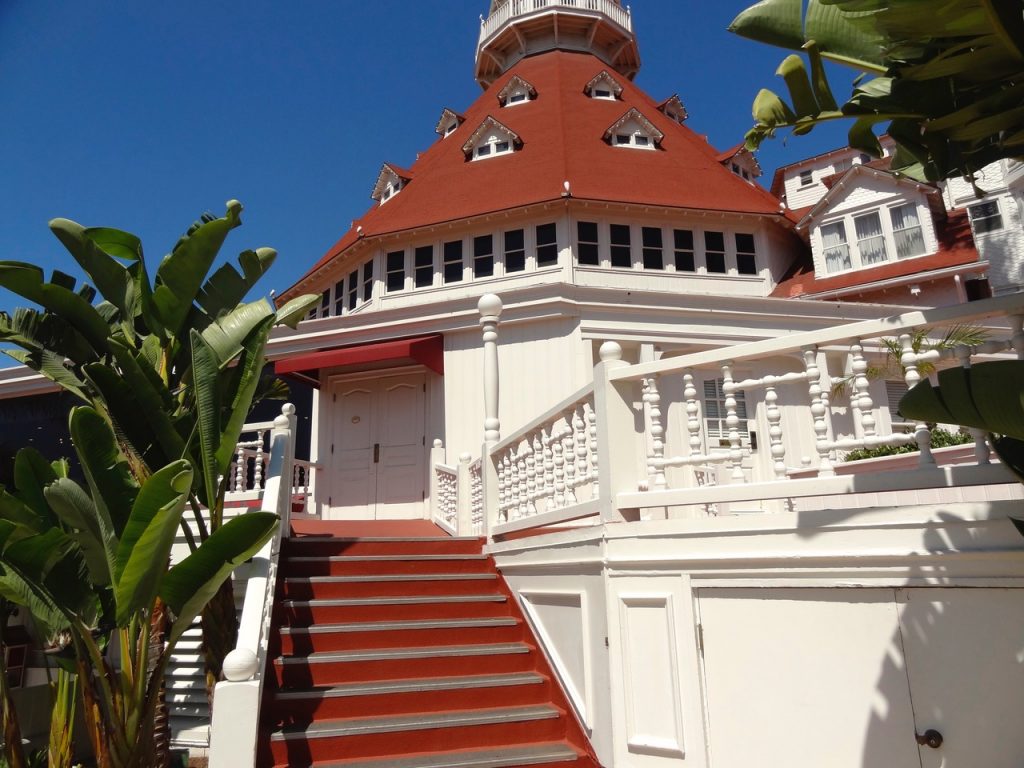
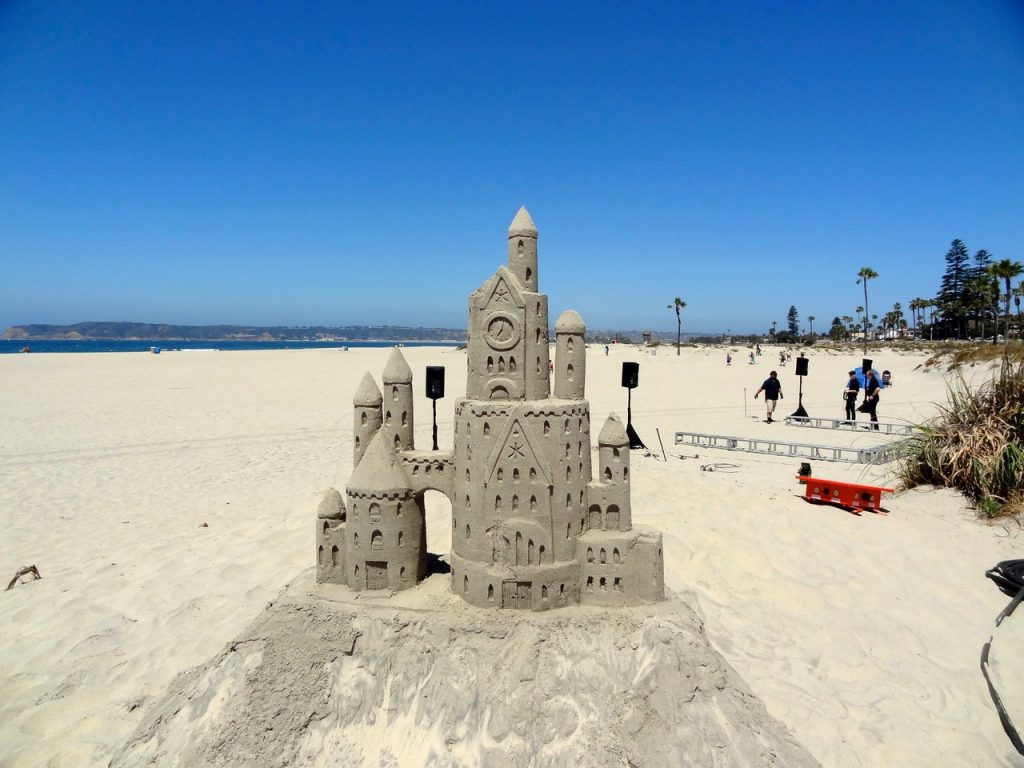
Spreckels also loved sailing and music. It was a short walk to the water where he kept his yacht and he built a music room in his home for his 41-rank Acolian pipe organ, one of only three in the world. There was also a solarium added for views of the Pacific.
After Spreckels died in 1926, age 73, the mansion changed hands three times and additional buildings were added to accommodate guests. The music room was floor-to-ceiling storage, and it was brought back to its original glory. The breakfast patio, hidden beneath plywood, was restored. The renovation became a true restoration the way it was 90 years ago.
Down the strand, which connects Coronado to the mainland, they even have an authentic gondola with gondoliers, guitars, the works. The canals are called the Cays. If you don’t look too closely, you might imagine yourself in Venice. Well, maybe not – but it was fun drinking prosecco and paddling along. Remember, when I lived there, there was no bridge. We took a car ferry back and forth unless we were too broke and had to drive around. It happened once.
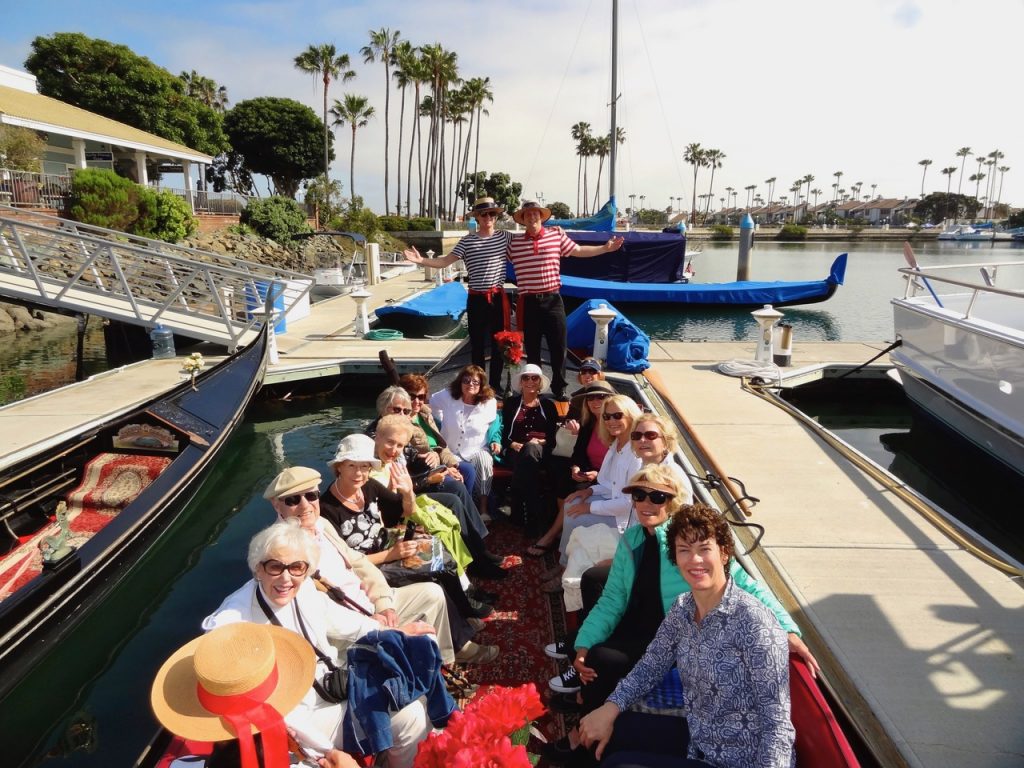
One day, we took the Old Town Trolley Tour, which takes you all over downtown San Diego. You just hop on or off at any stop. There’s Balboa Park, home to 17 museums including the Timken Museum of Art, all built in 1915 for the World’s Fair and influencing architects in the Spanish Colonial style. There’s Horton Plaza and Old Town. We spent two hours just riding around.
One evening, we attended Lambs Theatre on Orange Avenue (main street) where their little theatre production kept us in stitches – a comedy performance called Noise Off.
The fourth day, it was time to get back to real time. This trip we were in first class on the train for a lovely ride up the coast and a box lunch to top it off. Looking back was easy, partly because Coronado still has the same population as those many years ago. The main difference is there is now a bridge, which doesn’t seem to spoil anything. Franklin Roosevelt turned North Island into a Navy base, which at the time was second only to Pensacola. It is the home of the Navy SEALS and birthplace of naval aviation. There’s nothing more exciting than when a Navy carrier returns from a seven-month cruise. The greetings from wives and children for their long-gone men belong in a movie. I’ve done it.
And so, I come to the end of my “Then and Now” saga of Coronado. If you’ve never been, I think you’ll love it, too.







